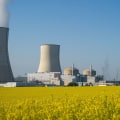A nuclear explosion is impossible due to the fuel not being compact enough to cause an uncontrolled chain reaction. The MIT reactor has a large amount of water and core structural materials that slow down neutrons before they reach other fissile atoms, making it impossible for an uncontrolled reaction to occur quickly enough to cause an explosion. A thermal explosion is also impossible due to the reactor being designed to shut down on its own as the temperature rises. In the event of a nuclear power plant accident, what can people do to protect themselves from the health risks associated with exposure to pollution? The main positive outcome of this accident for the industry was the formation of the World Nuclear Operators Association (WANO), which was based on US precedent. This exercise covered 147 nuclear plants in 15 EU countries, including Lithuania, with only plants decommissioned, plus 15 reactors in Ukraine and five in Switzerland.
Apart from Chernobyl, no nuclear worker or member of the public has ever died as a result of radiation exposure due to an incident at a commercial nuclear reactor. The global community is concerned about the possibility of nuclear weapons materials being sold on the black market and the potential detonation of a dirty bomb by a militant group in a major city. In 1971, the United States Atomic Energy Commission published the General Design Criteria for Nuclear Power Plants, which led to Russian PWR designs being adjusted. In the late 1970s, the United Kingdom's Central Electricity Generation Board considered the possibility that an aircraft fully charged and fueled passengers were deliberately hijacked and crashed into a nuclear reactor. These comprehensive and transparent nuclear risk and safety assessments, known as stress tests, involved a specific reassessment of the safety margins of each power reactor in light of extreme natural events such as earthquakes and floods, as well as loss of safety functions and serious accidents management after any start up event. Terrorists could attack nuclear power plants in an attempt to release radioactive contamination in the community.
UK Prime Minister Boris Johnson said it could directly threaten the security of all of Europe, and Ukraine's president accused Russia of nuclear terror. The regulator rod is made from aluminum with a cadmium envelope that absorbs fewer neutrons and is therefore good for small power manipulations (small adjustments to keep the power stable). In the United States, the Nuclear Regulatory Commission conducts Force versus Force exercises at all nuclear power plant sites at least once every three years. In order to bring Soviet-designed reactors up to safety standards close to Western ones, or at least achieve significant improvements in plants and their operation, OECD, IAEA and the Commission of the European Communities carried out a major international assistance program in Eastern Europe since the late 1980s. In addition to the Zaporizhzhia plant, Russia has taken control of the already retired Chernobyl power plant, which was site of the worst nuclear incident in history. Even if the containment structure surrounding all modern nuclear power plants were to break, as was the case with one of Fukushima's reactors, it is still very effective in preventing most radioactivity from escaping. Nuclear DKM can focus on creating, identifying, exchanging, transferring, protecting, validating, storing, disseminating, preserving or using knowledge.






